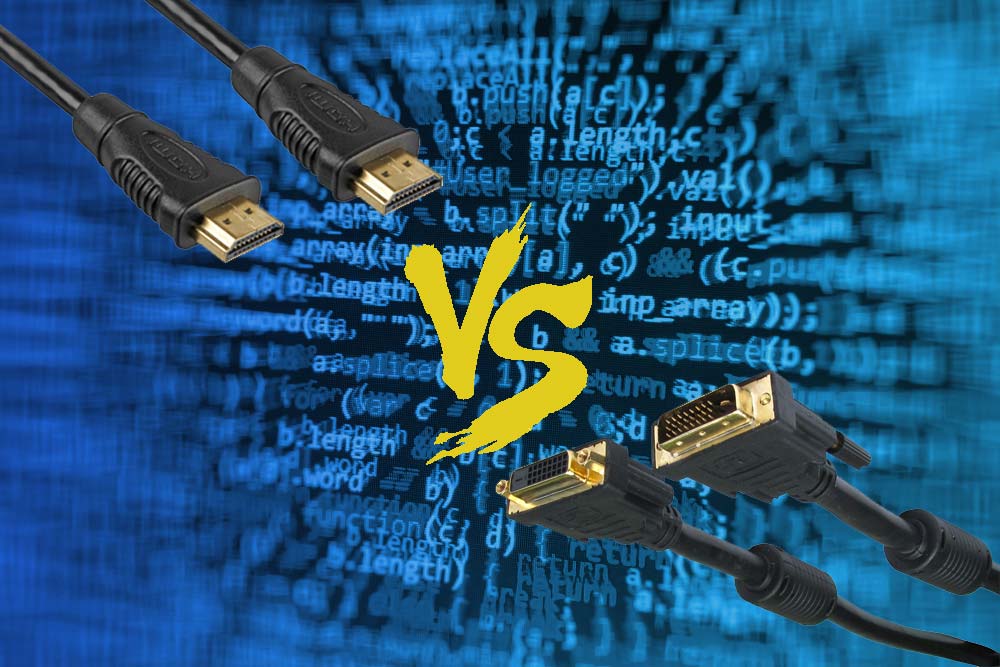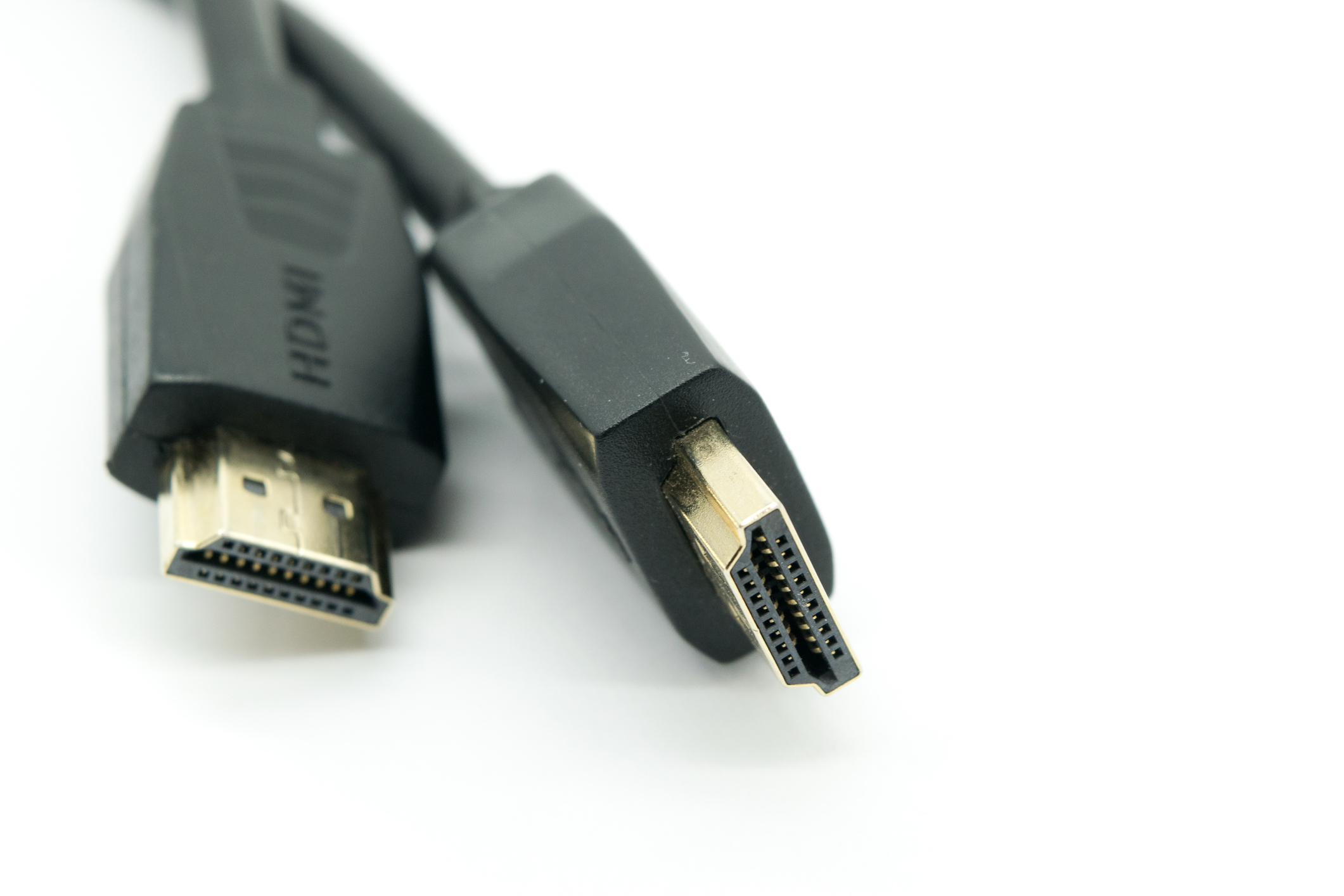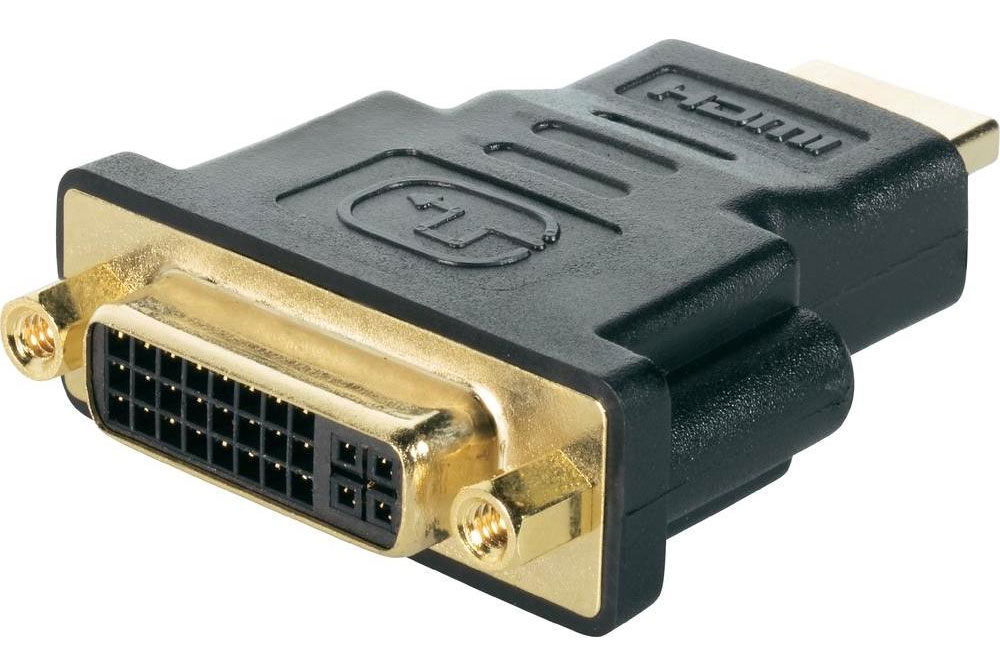HDMI vs DVI: What’s the best AV input?
DVI and HDMI are two of the most popular video cable standards on the market, but which should you be using?


If you purchase a new monitor, it will likely come with a DVI or HDMI connector or possibly both. Deciding on HDMI vs DVI involves evaluating a few important factors to ensure you get the best from your monitor and computer.
HDMI vs DVI
What is HDMI?
High-Definition Media Interface (HDMI) connects video and/or audio signals from a source device to an external device such as a monitor, soundbar or receiver.
It first appeared on shelves in 2003 to coincide with HD-ready TVs, and HDMI cables have become the most widely used for video connections.
The two interfaces - HDMI and DVI - are interoperable as they use the same standard if not the same connector. An adaptor can therefore be used to permit both HDMI and DVI to plug into the connector of the other without affecting the quality of the video signal.

What is DVI?
Digital Visual Interface (DVI) is used to carry a video signal from a source such as a desktop PC to a display peripheral like a business monitor.
It was first released in 1999 with the aim of creating an industry standard for the transfer of lossless video some devices (DVI-I) are backwards compatible with the analog VGA interface. DVI-D devices are digital only.
In contrast to HDMI, DVI does not support the transfer of audio signals and can only deliver video signals to a monitor. This means that devices connected to a monitor via DVI will have to be additionally connected to external speakers.

How to tell if I have DVI or HDMI
The most obvious difference between DVI and HDMI ports is their appearance.
Most HDMI connectors look more like an oversized USB plug than anything else, while DVI is larger and significantly more complex.
There are, however, a number of different HDMI connectors on the market. Most users will be familiar with the standard, Type A variant, which is used in the majority of monitors and consumer devices. Also commonplace is the Type D - or micro - connector, which is found on devices such as recent Raspberry Pi hardware. Other connectors include the Type C - or mini - variety.
There are various types of DVI cables, but the most common layout is a 24-pin setup that looks like a SCART lead. Because it's available in different iterations, you must make sure you've got the right one for your display.
DVI is available in three primary variants: DVI-I (analog and digital) and DVI-A (purely analog), and DVI-D (digital), the latter of these being far more common on the market today. Confusingly, DVI and HDMI are available in either single-link or dual-link formats, which support different maximum screen resolutions (which we will come onto later).
While different HDMI models are available, they're relatively simple, with newly released versions sticking to a numbered system that reflects both connector availability and capability. Type A connectors were defined in the HDMI 1.0 specification, Type C in the 1.3 specification and Type D added in the 1.4 iteration.
Sign up today and you will receive a free copy of our Future Focus 2025 report - the leading guidance on AI, cybersecurity and other IT challenges as per 700+ senior executives
At present the HDMI specification stands at version 2.1, which adds support for resolutions up to 10K, frame rates up to 120Hz, and dynamic HDR.
Finally, a significant difference between the two is that HDMI supports up to 32-channel audio, whereas DVI supports video only. This means that if you have a DVI cable, you will need to either switch to HDMI or use an additional audio cable to get any sound to or from the monitor.
Does HDMI have better compatibility than DVI?
Cables are rarely included with video hardware, and compatibility is an important consideration when shopping around. Nobody likes buying a fancy monitor and learning their hardware doesn't have the right ports to connect it!
Ultimately, this comes down to what inputs your existing tech has, but it's worth noting that HDMI is by far the most common connection source. An HDMI cable is likely to fit most modern PCs, Windows-based laptops, monitors, and gaming consoles – although it's being phased out in favor of USB-C, especially on devices like Chromebooks and Macs.

If your laptop has an HDMI input, but your monitor has a DVI, it's not the end of the world. Given they both use the same CEA-861 standard, adaptors can convert HDMI to DVI and vice versa without sacrificing quality. These are also very cheap to buy from most electronics retailers.
Does HDMI or DVI have higher refresh rates?
Given that 4K has become a familiar resolution in many homes and offices, the differences between the cables have become more obvious. With HDMI 2.0, support was added for 60Hz (which roughly corresponds to 60 frames per second) at 4K resolutions, whereas this was limited to just 24Hz on previous versions. It also benefits from HDR, a technology that is becoming increasingly available on top-end devices, which essentially allows a greater range of detail across varying light qualities.
RELATED RESOURCE

The Total Economic Impact™ of Dell PC as a Service
Cost savings and business benefits enabled by Dell PC as a Service
Another difference is that HDMI supports HDCP copy protection as standard, whereas DVI doesn't. This is a system that prevents HD content such as BluRay videos from being played on unauthorised devices.
Refresh rate has become an important consideration for those in the market for a new monitor. Higher rates can offer a smoother PC experience that is much easier on the eye, reducing the strain and headaches associated with long days in the office. A refresh rate can be simply considered as the number of frames per second a monitor is capable of putting out. 144Hz, for example, offers a potential 144 frames per second.
In its most recent versions, HDMI has caught up to DVI as both can now output 144hz at 1080p. In fact, HDMI is now considered the better option, as the cable simply supports more advanced technology than its dated counterpart.
As such, buying a cable that supports the correct version of HDMI or DVI is key and is informed by the devices that you are connecting.
Is HDMI cheaper than DVI?
Cables have been known as an easy target for scammers who raise their prices for these products by claiming they provide better quality than others.
In contrast, the only cable where the prices accurately reflect its standard are analog ones.
For these cables, manufacturers which provide a low-quality build directly translate to worse image clarity. But digital cables, even those that are seen as bad quality ones, are perfectly able to transmit the same level of signal.
You can apply this to HDMI and DVI cables, where you can expect the same level of image no matter the price difference between cables.
It is worth noting, however, that gold-plated cables might be more durable since the gold is corrosion-resistant. It might also be more resistant to damage, but this depends on the quality of the connector in your cable.
With this in mind, rest easy knowing that it’s more than fine to go online to choose the cheapest HDMI or DVI cable you encounter. You can relax and be confident that the image on your device is unlikely to be any different from a cable that’s a little more expensive.
Is DVI better than HDMI?
It's important to always make sure you base your judgement on whichever cable fits your hardware when you’re looking for the perfect connector to your AV gear.
RELATED RESOURCE

Sustainable devices for positive impact
Innovative technology solutions can help organizations meet their business and sustainability goals
In the past, DVI was considered a good option largely due to its support for higher refresh rates, and its compatibility with older connection types, such as VGA.
However, HDMI has largely made DVI obsolete, especially given that hardware advancements have slowly eroded any advantage DVI had.
DVI is also a more complicated type of connection, given the variety of forms that customers need to contend with.
Finally, the sheer number of functions that HDMI supports in addition to video - audio, HDMI ethernet, consumer electronic control (CEC) and so on - means there's very little reason to look at DVI these days unless your hardware or business need absolutely requires it.
Bobby Hellard is ITPro's Reviews Editor and has worked on CloudPro and ChannelPro since 2018. In his time at ITPro, Bobby has covered stories for all the major technology companies, such as Apple, Microsoft, Amazon and Facebook, and regularly attends industry-leading events such as AWS Re:Invent and Google Cloud Next.
Bobby mainly covers hardware reviews, but you will also recognize him as the face of many of our video reviews of laptops and smartphones.
-
 Gender diversity improvements could be the key to tackling the UK's AI skills shortage
Gender diversity improvements could be the key to tackling the UK's AI skills shortageNews Encouraging more women to pursue tech careers could plug huge gaps in the AI workforce
-
 Researchers claim Salt Typhoon masterminds learned their trade at Cisco Network Academy
Researchers claim Salt Typhoon masterminds learned their trade at Cisco Network AcademyNews The Salt Typhoon hacker group has targeted telecoms operators and US National Guard networks in recent years
